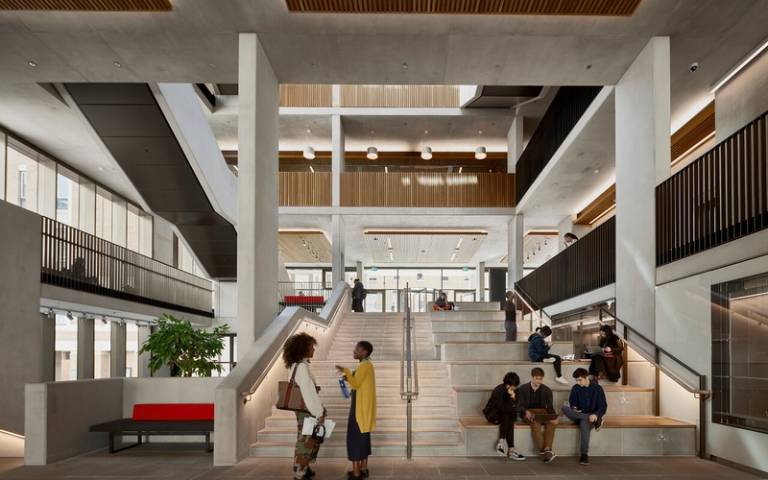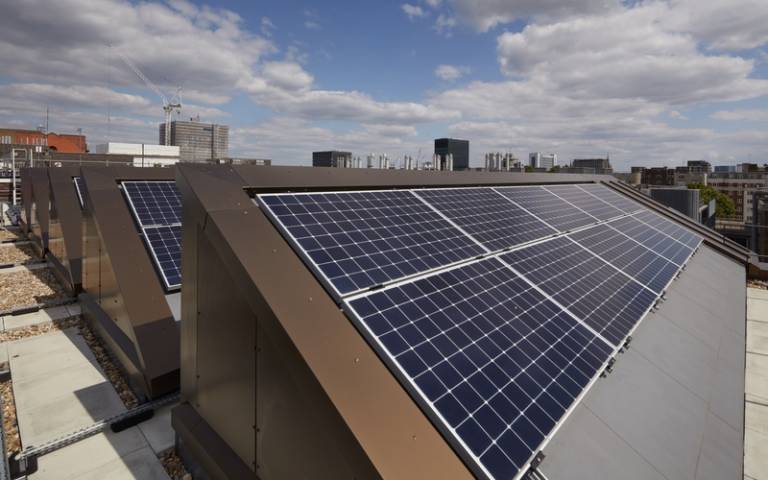Improving the energy efficiency of UCL’s buildings
The renewal of UCL’s buildings and facilities is offering multiple opportunities to contribute to its institutional target of being net-zero carbon by 2030.

8 October 2020
Photo credit: Matt Clayton
UCL has set challenging targets for improving energy efficiency in its new and existing buildings, as part of its institutional commitment to achieving net-zero carbon university by 2030.
“We expect all the initiatives to improve our buildings and facilities, whether large new-builds or small improvements to adopt a ‘fabric first’ approach to building design – prioritising passive solutions that reduce energy demand, such as natural ventilation, improved insulation and airtightness, while minimising the need for mechanical and electrical services, which consume energy,” explains Ben Stubbs (Sustainable UCL).
Larger projects must set targets to minimise energy consumption in relation to best practice industry guidelines.
“The design of the newly built UCL Student Centre is based on highly efficient building fabric. The concrete used in the building helps to absorb and releases heat slowly,” explains Ben. “This helps to regulate temperature and supports the building’s natural ventilation strategy.”
The ongoing renewal and maintenance of UCL’s estate is also providing opportunities to embrace energy-saving alternatives. The university has insulated roofs, replaced boilers with more efficient models, installed double-glazing and replaced inefficient lighting with new LED technology in a number of our larger buildings. UCL has also connected its room booking system with the heating control system to ensure rooms are only heated when they are in use.
“Together, these improvements will contribute to a huge saving in energy use across our campuses,” adds Ben.
Where feasible, UCL is also incorporating on-site low or zero-carbon energy technologies such as solar panels and heat pumps across its campus, reducing its use of carbon-generating sources.
For example, 250 square metres of photovoltaic panels were installed on the Student Centre. Along with the other solar panel installations across our buildings, in 2019 they generated a total of 70,000kWh – enough to make 1.9 million cups of tea.
 Close
Close



